Conventional wisdom dictates that semi-automatic pistols without fixed barrels (i.e. ones with some flavor of short recoil operated system) require a Nielsen device or “booster” to function with a silencer attached to the barrel. Without a booster the mass — the inertia — of the silencer hinders the barrel’s rearward movement under recoil and the pistol doesn’t reliably cycle.
Well, conventional wisdom sucks and the future of pistol suppressors is boosterless.
Make a silencer light enough — under approximately five ounces — and it’ll run without a Nielsen device. At least on the vast majority of pistols.
Many pistols will run reliably with closer to six ounces fixed to the nose of the barrel (weight limits for a direct-thread silencer is something I’ll play around with soon).
This AB Suppressor F4, for instance, weighs a hair under 4.5 ounces and I have yet to find a single 9mm pistol that doesn’t cycle absolutely, 100% flawlessly with the F4 threaded directly onto the barrel.
It cycles my SIG P365 with a True Precision threaded barrel even with lightly-loaded, 115 grain range ammo and with various subsonic ammo. It’s also cycled nine or 10 other pistols of various sizes and locking mechanism designs with every ammo I’ve tried.
Even the Palmetto State Armory 5.7 ROCK cycles with it attached, and it’s a 5.7×28.
This is the future of pistol suppressors. Lightweight, direct-thread designs that don’t require a booster.
AB’s F4 technically isn’t the only one that’ll run without a booster (JK Armament’s 105 series performs this trick as well, though really needs to be shot “wet” for proper suppression performance), and it wasn’t the first (I’d likely credit the GEMTECH Aurora with that, though the F4 is the first one of modern design that I know of, whereas the Aurora used rubber wipes stuffed with petroleum jelly), but my prediction is that it’s going to be far from the last.
Fixed-mount silencers designed for use on Browning-style short recoil-operated, semi-auto pistols will be the next big thing in pistol suppression.
At this point if you’re thinking, “Okay, sure, cool, sounds fine, but who cares? Why not just run a booster?” Let’s dive into some of the issues with pistol boosters . . .
Booster assemblies add weight. Most of ’em weigh about five ounces. That’s more than the entire AB F4 silencer. The booster assembly itself accounts for more than half the weight of quite a few other pistol suppressors.
Booster assemblies add length. On average, you’re looking at about 1.5 inches of additional length over a similar silencer designed from the get-go to be direct-thread.
Booster assemblies add cost and complexity. They’re typically made from four or more components, a couple/few of which are threaded, precision parts. The piston and spring have to reciprocate inside of the assembly while locking back up so precisely that it doesn’t affect suppressor alignment. Canting the muzzle of the silencer just a few thousandths of an inch out of alignment with the barrel can cause baffle strikes — bullets impacting silencer internals instead of passing cleanly through the bore.
Booster assemblies increase the risk of baffle strikes.
The obvious reason is tolerance stacking — assembling multiple parts in series adds (“stacks”) the tolerance window for each into the final assembly’s effective tolerance range. For example, if the piston has an acceptable tolerance off of perfect of +/- 0.001″ (one thousandth of one inch), and so does the piston collar and so does the booster housing and so does the silencer body, it’s possible that screwing all of those things together lands you 0.004″ (four thousandths) off. Maybe that’s off-center, maybe that’s at an angle, but any amount at any vector taking you away from perfectly concentric with the bore of the barrel is a bad thing. Now that we’ve stacked some +/- fudge factor into the mounting system we have to open up the bore of the silencer more than we might otherwise have to in order to ensure the bullet can pass through it without touching. The bigger the bore diameter in comparison to the bullet diameter, the less efficient the suppressor gets. A direct-thread suppressor like the AB F4, where the mount is integral to the silencer body and there are zero moving parts, eliminates tolerance stacking. The entire bore of the silencer, from muzzle to mount, can be cut via wire EDM in a single operation and will be flawlessly, perfectly concentric in every way (they then cut one set of mounting threads instead of four or five).
For the entire time during which the piston is pulled, by any amount, out of the booster housing by the pistol’s cycling, the silencer is free to wobble. It’s only secure in its alignment when the piston is fully seated inside the housing. If you’re firing rapidly, it’s possible to sort of “outrun” the booster and fire a subsequent round while the piston isn’t fully seated. In some cases, the piston must be in a particular orientation to fit down onto a lug(s) in the bottom of the housing and can come out of orientation during firing, preventing it from fully seating. In either case, baffle strikes are not just possible, but likely. I’ve done this myself on three different 9mm silencers by simply shooting too rapidly.
Booster assemblies increase blowback. With the inside of the booster housing acting in almost all cases as somewhat of a gas expansion chamber and a simple slip fit between piston and piston collar, a jet of gas is often sent directly toward the shooter via this gap.
High pressure gases trapped inside of the housing also increase blowback through the pistol’s action once it opens up and becomes the path of least resistance for this gas to escape. Low backpressure and “flow-through” designs will be more effective when built into direct-thread silencers rather than Nielsen device-equipped silencers.
Finally, booster assemblies create a strange and different recoil impulse. Shooting a direct-thread can like the AB F4 doesn’t; it feels totally normal (i.e. it shoots how it shoots when unsuppressed).
If you’ve shot a suppressed pistol, you’re familiar with the strange “ca-chunk” added to the recoil impulse. Upon firing, the pistol’s rapidly-recoiling barrel launches rearward so quickly that the inertia of the silencer keeps it stationary while the barrel pulls the spring-loaded piston (which is what the barrel is directly attached to) rearward out the back of the booster housing.
At approximately the moment when the pistol’s slide hits its rear travel stop, the piston spring sucks the silencer rearward, effectively returning the piston into the booster assembly. Usually the slide has just begun its trip forward, back into battery, when the suppressor completes its short and fast journey rearward. You can feel this bottoming out of the piston into the housing during the pistol’s recoil cycle.
Then, as usual, the slide continues moving forward until the barrel snaps back into however it locks up with the slide and then hits its forward travel stop, fully in battery. This also sharply stops the suppressor that was along for the ride. If the suppressor is heavy enough, the piston may very slightly extend from the booster again before the spring locks it all up again.
Combine the timing of the slide cycling with the different timing of the piston cycling with the disjointed, delayed movement of the suppressor and you end up with weirdness. This double-recoil ca-chunk thwump feels odd and makes it harder to be fast, accurate, and consistent. It causes a less predictable nose dive of the pistol when it returns to battery. Did I mentioned it just plain feels weird?
In part because a boosterless suppressor must be lightweight and in part because the suppressor moves as one with the barrel, shooting a handgun with a silencer like the F4 on the end feels nearly identical as shooting one without. The biggest difference is that you’ve moved your hearing protection from your ears to the gun.
For all these reasons and more, lightweight, direct-thread silencers are the future of pistol suppression.
Have questions about silencers? Legality, purchasing process, mounts, use, models, etc? Nobody’s better than the experts at Silencer Shop. Hit ’em up via phone or email and join the suppressed shooting club! It’s the only way to be.


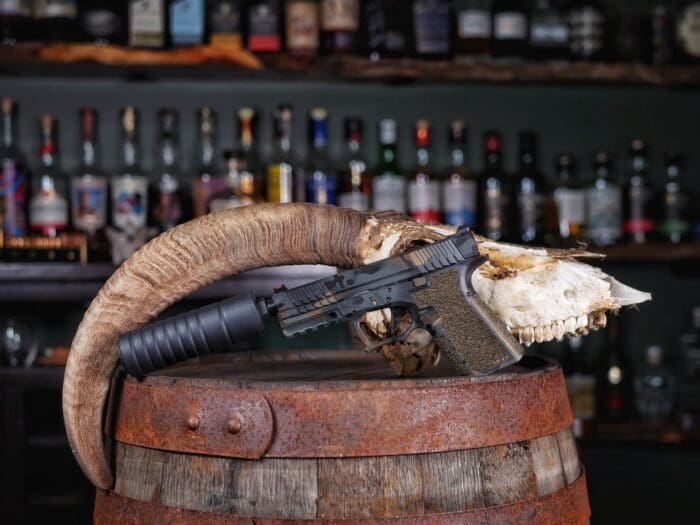
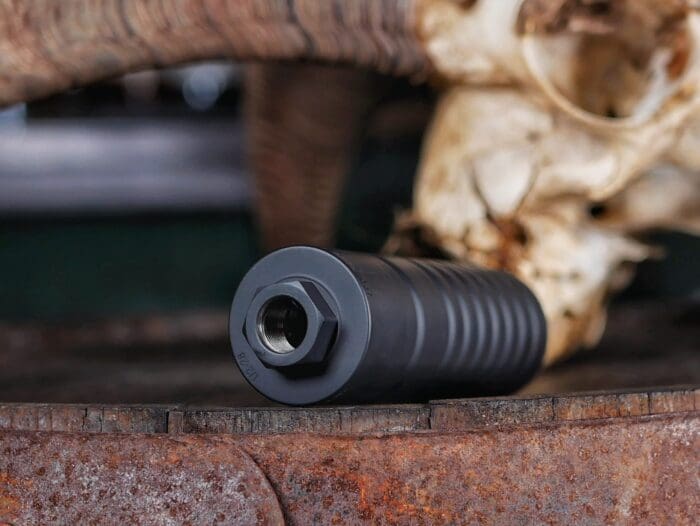


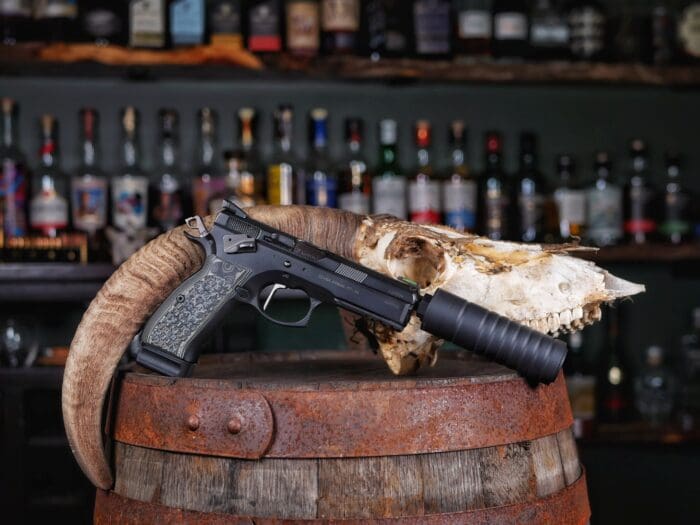
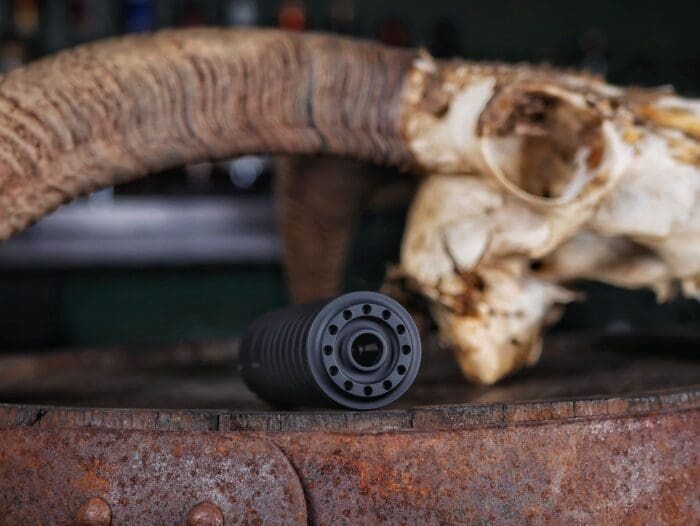
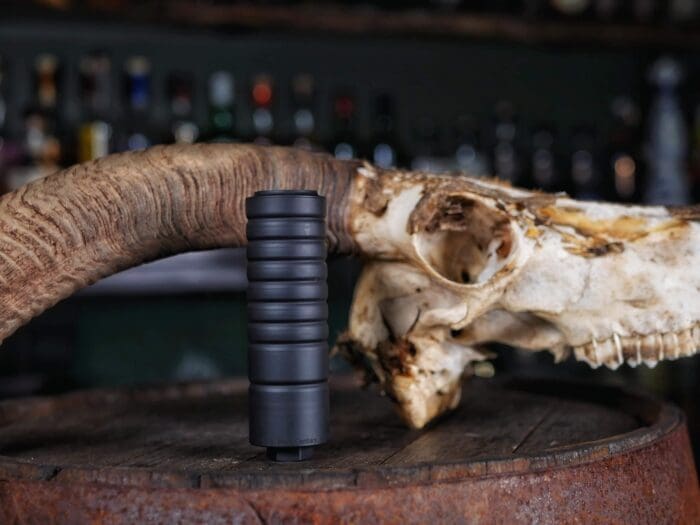
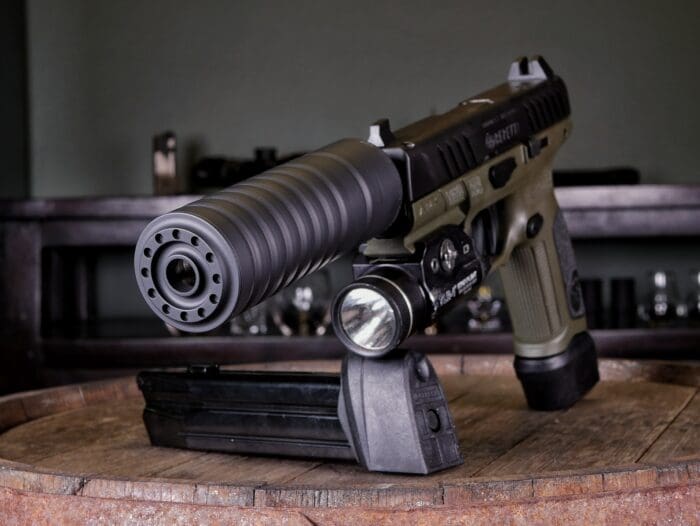


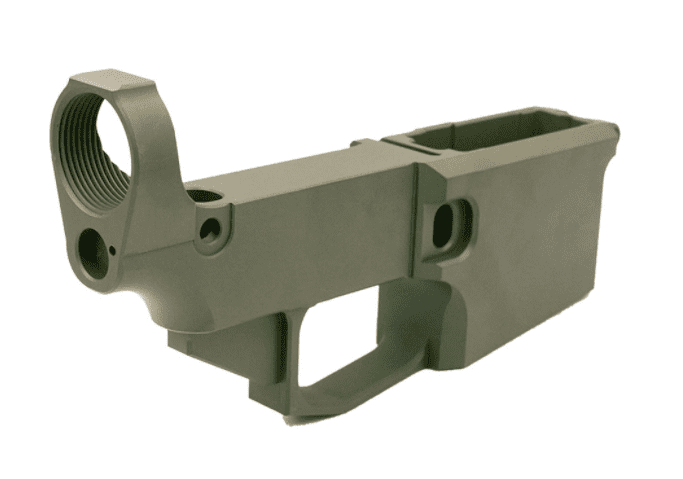
Very interesting. Great article and explanations. I’m kind of anti NFA right now with the PB issues, but if I do get into suppressors in the future I will definitely keep this in mind.
I was the same way, until I just did it and bought one for my .308 rifle. It is night and day. I hunt in the southeast and using a suppressor means your ears aren’t ringing right after you shoot, nor is your sight momentarily disrupted by the blast. In the 3 years I’ve been hunting suppressed, I haven’t missed a single shot. Add to that that in a large field, firing a suppressed rifle doesn’t scare off any other animals nearby. It literally sounds like a standard .22lr to everyone that hears it. Sure, having to have the stamp sucks. And another suck is that the ATF can come to you anytime and demand you show them the suppressor. But how many articles have you read about that happening? Take the jump, enter the suppressed arena and you’ll never look back
somebody FINALLY figured out what I knew 40 years ago, keep the can light enough and you can make the OAL a lot shorter for the can and gun combo. Now, how long will it take them to learn what I wrote a book about (Paladidn press) 30 years go, “how to make a silencer for a .45”? Sleeve the baffle tube and have an underchamber, to make the can a LOT more “quiet” in a lot less length
It might also be beneficial to make threaded barrels, intended for suppression, with different camming geometry.
I’m looking for a silencer for my Taurus 85 or Rossi M68.
They’re basically clone guns so one can should fit either.
Won’t really work with that frame to cylinder gap.
A Russian surplus revolver can *kinda* work, as its action seals the gap somewhat…
RE: “For example, if the piston has an acceptable tolerance off of perfect of +/- 0.001″ (one thousandth of one inch),”
Anyone who owns a firearm should know what .001″ is. And if not here’s a good general purpose dial micrometer…ebay seach 332568970700
Micrometer 101: Don’t Drop It.
Sorry to disappointment you, but STW was the first to make all of their handgun suppressors that cycled without a “booster” or wipes, all weighed in under 4.5 oz. and were available in 1″-1.375″ diameters. STW never used any baffles or spacers and patented the one piece insert which other manufacturers copied and called the monolithic internal. They were available in 7075 aluminum or titanium. BTW, STW was the first to use titanium.
STW! Thats what I was trying to remember when I read this. I thought “some one already did this.” but couldn’t remember who.
The noise never bothered me.
Yeah but you dont look cool just shuting the naked gunm. You’ve gotta put lazers, and lights, and red dots and scopes and NV and silencers,and a chainsaw bayonets.
Now your looking good, especially the great big arm muscle you get by holding your handgunm,,,,,oh sht, no need to hold the handgunm if you attach a bipod. Scratch the big arm muscles.
Go go gadget
what about the thing, you know, the thing that goes up ?
Details details, I forgot about that.
“The noise never bothered me.”
What? 🙂
Would this be more likely to work with a hot round? So .357 Sig (5″ barrel in a 4.25″ M&P) should cycle fine? Also, I assume a Beretta 92 9mm would be no problem since the barrel doesn’t tilt.
I had actually asked AB about this awhile back. They said sometimes it works. Sometimes it doesn’t. They can’t guarantee that it will work.
It’s all relative. A pistol manufactured as a .357SIG will be engineered (slide mass, spring rate(s), camming geometry) for a safe unlocking duration and slide velocity, so adding barrel mass in the form of a suppressor will affect it similarly to a 9mm.
As you noted, an M92 with its linear barrel motion will be less likely to fail than one where the barrel has to lever up the mass of the supp, but it does still add inertia / initial recoiling mass.
The pistol began life as a 40 S&W. I think they’re typically made the same as a .357. I assume the slide velocity is increased when shooting .357. It’d be a lot of trouble to go through only to find out it won’t work.
They’re close, and it depends on the load. In general, .357 (lighter bullets at higher velocities) has slightly higher ME (which varies with the square of velocity) and slightly lower recoil (momentum, which varies in direct proportion to velocity).
The best pistol silencer happens when you don’t pull the trigger.
😆
Thats no fun!! 🥴
Suppressors/silencers are the 1 issue where I agree with the “Civilized Countries” Someone likes to brag up. They should be sold over the counter as needed to anyone who wants 1.
Usually required for firearms used for anything but military or LEO use.
Gun mufflers would save a lot of people a lot of hearing loss.
Weight and balance has been 1 of the reasons I never cared for silencers. Get the weight down under 5 ounces and the size of the can down under the size of a coffee tin and I might be interested.
Same here. That’s why I was looking at this one.
I agree. Everything is a tradeoff until it isn’t; pistols trade just about everything for concealability. If I have room for a suppressed pistol, I have room for something better than a pistol.
Comments are closed.